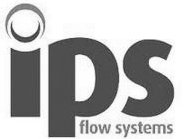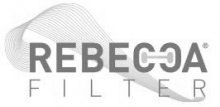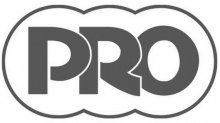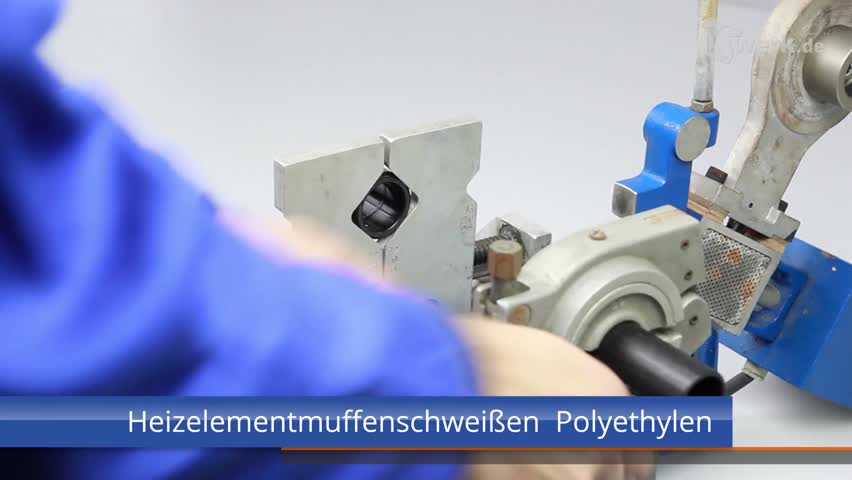Technical information PE pipe systems |
| The company Akatherm FIP GmbH located in Mannheim is a leading provider of tube components made out of thermoplastic, with long-term experience in provision and prefabrication of plastic pipelines. The products and services provided by Akatherm FIP underlie a strict standard of quality, which orientates itself by the demands of the industrial branch who builds plastic conduits.
Additional to pipes, extruded and welded fittings, plastic accoutrements made of PP, PVC-U and PVDF are offered. The delivery program for accoutrements includes ball valves, diaphragm valves, butterfly valves, nonreturn valves and flap traps as well as strainers. All ball valves can be equipped with PE-welding ends for heating element butt welding and/or heating spiral welding. Akatherm FIP GmbH delivers pipes made of high molecular weight PE types like PE 100 and PE 80 on request, while pressure pipe fittings are only produced with PE 100. Fittings used for outlet pipes will be delivered in PE 80. Flanges and seals, mounting parts for walls and basins and different fixing means round up our product range. The following material data are guidelines, which might differ depending on the chosen treatment. Therefore they can’t be taken over for the finished product. For further information on all Kwerk GmbH products and services contact our Customer Services Department as detailed below. Customer Services Tel: 0049 2602 999730 Fax: 0049 2602 9907329 Email: info@kwerk.de |
 |
PE Pipe Systems - General characteristics
|
Pressure pipes made of PE-HDBecause of the distinctive elasticity, high resistance to shock and the multiple ways to use Akatherm FIP PE-pressure pipes, they are perfectly suited for the use in all fields of terotechnology with special demands concerning the internal pressure capacity up to p=16 bar. Despite standard pipes and standard fittings we offer 45°-junctions for this application area, arches with bigger radii made out of tubes, welded fittings, sockets for resistance welding, accoutrements up until a nominal pressure of stage PN 16 and more equipment. Pipelines made of PE-HD used for industrial plantsAkatherm FIP PE pressure pipe products with an SDR classification provide the user a range of ways to apply them in industrial and chemical plants. Especially for this field of application an extensive delivery program for accoutrements and connecting elements is available for the costumer. An important criteria for the economic use of the Akatherm FIP PE pressure pipe products is the classification of the operating conditions in the according SDR-series. For this we provide the user pressure-temperature-diagrams of our Akatherm FIP PE-pipes and –fittings. The product management of Akatherm FIP would happily help you to make the right choice. Pipelines made of PE-HD in sewage technologyAkatherm FIP PE-wastepipes especially find application when the internal pressure load isn’t above p=4 bar. Preferred areas of usage are for example pressurized draining and open channels. Like the delivery program for Akatherm FIP PE pressure pipes the delivery program for wastepipes includes all common PE-pipe products, additional to transition pieces to another material, shaft connections and according to the costumer’s desire we offer individually manufactured gully holes as well as the necessary shut-off devices. Waste pipes made of PE-HDAkatherm FIP GmbH waste pipes made of PE 80 according to DIN EN 1519 are used for the depressurized drain of hot and cold waste water; they are also suitable for the installation in buildings as well as for underground laying within the building’s structure. The Akatherm FIP PE-drainage program includes the whole range up to d 315 mm according to the ISO-series S16/S12,5 , with tempered pipes, fittings, sockets for resistance welding and shrink-on sockets until d 250mm. Pipelines and components made of PE-HD used for sewage treatmentIn particular Akatherm FIP PE-pressure- and drainage pipes are used for the transport of industrial and domestic waste water of sewage treatment facilities. Additional to the default program and the accoutrements, for this field of application special fittings, for example adapters and spacer units, inspection chambers, wall bushings and such are available. Double-walled pipelines made of PE-HDAkatherm FIP PE-double-walled pipes and double-walled-pipe components made of PE 80 and PE 100 are used when a special protection is necessary for people and the environment in order to prevent a danger caused by the unintentional release of water endangering liquids or toxic substances. In addition to the Akatherm FIP plus double-walled pipe system with tubes and fittings made of PE 80 according to the ISO-series S16/S12,5, a complete double-walled range of products with inner tubes made of PE 100 PE100 for operating pressures p≤10 bar and operating temperatures up to a maximum of 50°C is available. Details concerning the equipment and classification of the double-walled-pressure pipe components are obtainable from the product management of Akatherm FIP. Pipelines made of PE-HD used for pool constructionThe equipping of swimming pools is a preferred field of application for Akatherm FIP PE pipelines. In addition to the diversity of our default program we offer globe- and control-accoutrements, adapters and spacer units, wall bushings, furrow outlet pipes, admission ports and special components on demand of the costumer. Pipelines made of PE-HD used for the transport of solid materialThe exceptional hydraulic properties due to a smooth tube wall and the high resistance to wear and tear make the use of Akatherm FIP PE-pipelines in facilities for sand quarrying, gravel extraction and mining possible. Like all material the lifespan of plastic pipes and fittings depends on the degree of saturation, the geometry of the solid parts and the flow rate. Special fittings, like arches made out of pipes with a streamlined radius, prefabricated pipe components, flange or screwed pipes and sockets for resistance welding are part of the Akatherm FIP-PE delivery program. Pipelines made of PE-HD used for water supplyAkatherm FIP PE-drinking water pipes made of PE 100 fulfil the strict requirements in the field of drinking water supply. The pipes resist a high internal pressure, are physiological harmless and correspond with the currently valid norms and regulations. Please ask for those separately. Method of installation for pipelines made of PE-HDDue to the low weight of pipeline parts made of PE-HD, in comparison to copper pipe installations they only weigh half and compared to steel pipelines they only weigh 1/6, they are easier to handle when being installed. Therefore pipelines made of PE-HD can often be installed without the use of cranes or elevators, which offers an advantage over metallic pipelines especially for cramped spaces or when the pipeline needs to be installed at a height of 2 meters or more. Concerning the support span for pipelines made of PE-HD (PE 80, PE 100) the guideline DVS 2210-1 includes detailed information, so the chart dealing with the pipe clamp distances is only meant to provide an overview on the admissible support span of PE-HD pipelines. Please keep in mind, that for pipelines whose linear extension is impeded, the pipe clamp distances need to be shorter to prevent the collapsing of the pipeline conduit. The guideline DVS 2210-1 includes the corresponding details. In most cases the higher extension of PE-pipelines compared to metallic pipelines under the influence of heat doesn’t cause problems. When the temperature changes are within a range of Δϑ= ± 10K according to our experience no measures to compensate the change in length are needed. If the pipeline made of PE-HD forms a straight distance ≥ 50 m of length, it is necessary to examine, whether existing changes of direction can absorb the thermal expansion or if the installation of an expansion arch, for example in a U-shape, is needed. An alternative for this is to install the thermoplastic pipeline in the straight part between two fixed points (system of fixed restraint), where extension is prevented, no matter how long the pipeline is. Since well-founded knowledge is essential in order to deal with thermoplastics, Akatherm FIP recommends a corresponding calculation with a suitable calculation program. Distances of pipe clampsPipe clamp distances in mm for tubes made of PE 80 and PE 100 (SDR11) with a medium density of ≤1 g/cm³ |
The following coefficients of correction apply:Coefficient of correction in dependence on the SDR-series Pipe SDR 7, 4: 1.07 Pipe SDR 17, 6: 0.91 Pipe SDR 33: 0.74 Coefficient of correction in dependence on the circulatory medium Density: >1.0 g/cm³ < 1.25 g/cm³ 0.96 Density: >1.25g/cm³ < 1.50 g/cm³ 0.92 Regarding coefficients of correction under utilization of gaseous mediums please confer with our product management. Fixing devices for pipesConcerning the topic of fixing devices for pipes you can read the following in the guideline DVS 2210-1: “Fixing devices have the task to absorb all weight from a pipeline safely and to pass it on to the building or underlying construction. The limited stability and firmness of thermoplastic pipelines, depending on the temperature, results into different requirements compared to metallic pipelines.” With this statement a new chapter is opened up and the regulations and pieces of advice given there can impossibly be shortened. Therefor Akatherm FIP recommends the users of plastic pipelines with a standard of quality to inform themselves about the references made by the experts in this section. By making this decision the user ensures the reliable installation of simple and complex pipelines made of thermoplastic. Support of heavy pipeline partsAccoutrements, filters or other heavy parts of a pipeline should always be attached independently from the conduit in order to keep inadmissible loads from the pipeline. For example when flanging in butterfly valves, mounting plates can be used instead of loose flanges accoutrement or for ball valves special ball valve mountings from the delivery program of Akatherm FIP can find application. Welding processes for pipelines made of PE-HDThe described welding processes in guideline DVS 2207 ff for connecting pipes and fittings made of thermoplastics allow a reliable installation of different pipelines. The user has the choice between the processes of heated tool butt welding, heated tool socket welding and heating spiral welding. The heated tool butt welding connection is in general only admissible in the combination PE 80/PE 85, PE 100/PE 100 or PE 100/PE 80 from the same SDR-series. The butt welding connection between pipes and fittings from SDR 17 with SDR 17.6 is allowed according to DVS 2207-ff because of the slight difference in their wall thickness. Workshop components and prefabricated subassembliesProduction parts or prefabricated subassemblies are, if no divergent arrangement was made, produced according to internal general tolerances. For butt welded T-pieces and junctions, if technical possible, the inside welding lip will be minimized as much as possible. For butt welded segment arches the inside welding lip won’t be cut down. CommentsThe material properties described in the product catalogue are average guidelines, which mainly serve the information and orientation of the user. All details were gathered with best knowledge and care; it’s not possible to deduce liability from the given information. NormsThe available tubes and fittings are produced according to the most important national and international norms and regulations. Those include: - ISO 7 - ISO/DIS 15494 - ISO 161 - DIN EN 1092 - DIN 8074 - DIN 16963 - ISO 727 - DIN 2501 - DIN 8075 - EN 1555 - EN 12201 Guidelines for thermoplastic welding and project planningThe project planning of pipelines and the linked welding processes, as well as the education of our plastic welders are based on the principles of the DVS-guidelines (German union for welding and similar processes) and follow especially the given guidelines: - DVS 2205 - DVS 2207 ff - DVS 2212 - DVS 2210 ff AuthorizationOur pipes and fittings from the SDR-series 17 and 11 have additionally a DVGW authorization (long and short connecting pieces). A part of our accoutrements have the TA air license (2- and 3-way ball valve of the type VKD), butterfly valves and diaphragm valves. The fire safety collars have a DIBt authorization. |
Optimize your shopping experience with our detailed delivery information |
Partnership at the highest level. |
|
|
|
|
|
|
|













































